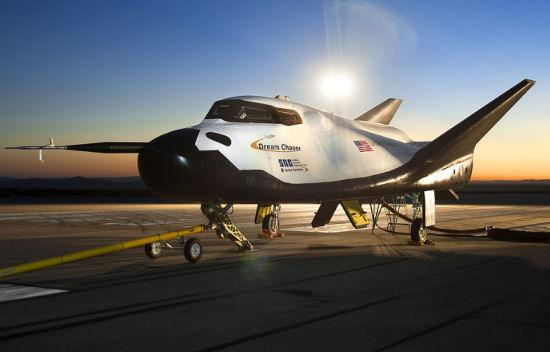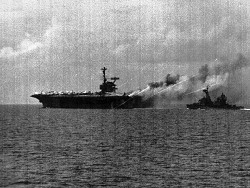
It’s amazing, I’ve made a rapid survey of his friends, it turned out that almost all believe that currently, after the closure of the project “space Shuttle” and “Buran” reusable spacecraft mankind has not used.
And yet, right now, they fly over us. As of 2016, United States expluatiruem at least two types of reusable spacecraft, and in 2017 their stranet for four. Or even five, depending on how you count.
It is, however, not surprisingly, the Russian media have built around the Western space programs rather blank wall of silence, and if through it something prosecutes, exclusively filtered, dosed and distorted form. Here, most of my friends are somehow convinced that with the launch of the reusable Falcon rockets “the Americans are solid failures”, although the situation is exactly the opposite.
Just yesterday, for example, carried out another landing, reusable commercial spacecraft “Dragon” (Dragon), which was previously launched reusable space rocket “Falcon 9” (Falcon 9), which is running it, returned to earth. That’s about the reusable space rocket almost all I heard something, but about reusable spaceship by almost nobody.
So I thought. It would be nice to tell how things are in world space. As they actually are there.
Remember, after closing the program “space Shuttle” in 2011, all the Russian media unanimously and publicly wrote that it is now the era of reusable spacecraft came to an end, they have outlived their usefulness, will resume soon, and the primary means of delivering cargo and crews into space to the ISS will become good old and reliable Alliances and Progress?
So, it was not true. Or rather a half-truth. Unions and Advances are of course were and remain the primary means of delivery to the Russian part of the International space station.
And the American part of it, after using it the first reusable Shuttle, was flying reusable “Dragon”. Which, perhaps not as impressive as a Shuttle, and not that big, but it works much more simply: more reliable, safer, and most importantly is significantly cheaper. Cheaper, because that uses quite different modern technology of flight and landing. And because it can put into orbit by rockets reusable, rather than disposable boosters.
And that’s now above us flies the other reusable U.S. space vehicle, the Boeing X-37.
Not heard?
It is understandable, the owner of this spaceship is not NASA and the US army, and because no one knows why he is flying and making. X-37 is not just a “reusable vehicle”, a full-fledged spaceplane, or, as they say — “orbital plane”. That is, he is not just spinning on the orbit in which he was taken, and maneuvering freely in space, fly anywhere he wants… Well, in short, remember the devices on which the rebels in “Star wars” attacked the “Death Star”. Well, it’s about the same, only the drone.

Boeing X-37
Fly X-37 thoroughly and for a long time. For example, the previous flight lasted 674 days. And the one that is flying now, flying for exactly a year, from 20 may 2015.
But “Dragon” and “X-37” is ethereal ships. Reusable manned flights will begin in the next, 2017.
This “lag” happened not because there is any difficulty in implementation of the program, but rather, because science and technology are developing so rapidly that new possibilities emerge faster than the developers have time to draw the drawings, and it is very tempting to include all new.
So, for example, piloted the “passenger” version “Dragon” the Dragon V2 was to begin to make regular flights in 2015. She was ready for this, tests were carried out, but… at that moment science and technology took a few big steps forward and scheduled flights moved for two years to give the “Second Dragon” new opportunities. Passengers was for 2 persons more (seven instead of five),the new engines, which, note, are manufactured using a 3D printing, this provides a soft landing even in case of failure of all eight engines.

The rise of the “Dragon 2” off the ground (without booster)
The apparatus can freely maneuver in space and in earth atmosphere… to take off and land like a helicopter, on their 8 jet printed on 3-D printers engines.
And Yes, to orbit it displays all the same reusable rocket “Sokol” (Falcon).
About the rest of mnogorazovogo” that already exist and are tested regularly should start to fly next year, I’ll give you the short version not to bore you.
The orbital plane Dream Chaser (chasing a dream), whose first flight should take place in November 2016. After seeing it, you will exclaim: “this is a Shuttle. Well, Yes, it is, DreamChaser is the development of the project “space Shuttle”. But, of course, is at a new level. It is made of composite materials, can take off and land in the atmosphere (and not only to plan how the Shuttle), and the special feature of folding it. At the start of the wings, stabilizers and the exposed portions are removed, as the vehicle would be “rolled in a tube”, which for the withdrawal of the spacecraft into orbit can “stick” in any suitable for the size of the missile and thus avoid starting damage (remember that the cause of death and of the Challenger and Columbia were damaged at the start).

The orbital plane Dream Chaser
Of the existing missiles in size suitable disposable American Atlas-5 and the European Ariane 5, but in the future, a transition to reusable “Falcon”, a technical possibility exists now.
Orion (Orion) — the multipurpose reusable space vehicle able to make interplanetary flights. Edifice, a dwelling house, with a diameter of 5 meters. This is not a “project” and “promising development”. This ship is already created, already made its first flight into space, but is not operated as a program of interplanetary flight (to the moon and to Mars) will begin only in 20-ies. And the needs of “near space” is now fully covered by the “Dragons”. However, that the project is not “idle for nothing” as planned, the Orion spacecraft will fly to the ISS in the coming years.
Boeing CST-100 Starliner —reusable vehicle narrow purpose, to fly on the space station, the closest analogue of the first “Dragon”, but unlike him can take on Board a crew of seven people. Created by request of NASA. Well, just because NASA found that in addition to leased from a private contractor, “Dragons”, in the face of SpaceX, it must be their own ships. A characteristic feature of the STARLINE is that it can be installed on virtually any existing rocket.

Boeing CST-100 Cockpit
But the main feature, thanks to which all these ships will do, and not conventionally “reusable” — this is certainly the project “Sokol” (Falcon), reusable rockets, which will display (and now withdrawn) all these reusable vehicles into space and return to earth. So that in foreseeable time the cost of launching a payload into orbit would be comparable to the cost of fuel consumed.

Falconis a modular line of accelerators that can be interconnected in the manner of Lego, increasing the power and possibilities of received missiles to the physical limits of the technology. Moreover, after the implementation of the tasks, all the cubes of this constructor are returned to earth by a soft landing for reuse.
Currently the most powerful rocket of the series, Falcon Heavy (first launch in the fall of 2016), is able to lead to a low reference orbit 55 tons of cargo, which is two and a half times more than the most powerful Russian rocket proton and a half times more than that does not yet exist, but are the Russian Angara-7.
Now let’s see what’s “new space” in the asset of the Russian Federation.
No-th-th!
All the same Alliances-Advances that are hopelessly outdated, fly already since the 60-ies, but there are clear signs that in the foreseeable future cease to fly.
Yes, there are “proton”, from the same, the 60’s, which according to Russian documents passes as “heavy” rocket, but to orbit the mass relates to average. The most emergency, very dangerous, flying on the hugely toxic heptyl rocket. Start that can only be from one place in the world, from Baikonur, and which is entirely dependent on foreign (including Ukrainian) components, which are now… well, you know. In fact, the proton plan was to shoot production in the ‘ 80s and replace “Energy”. But, “Energy” was not held, and the proton is flying now (constantly exploding) just because other “heavy” missiles from Russia.
But what about Angara? — you will ask. — Which Russian media buzz we are all ears.
But let’s talk about “Hangar” talk.
Moreover, there is nothing to compare — “Angara” to some extent the analogue of the “Falcon”. The same modular design — LEGO blocks — from which a rocket is going to need power. But that the similarity ends!
First of all, the difference is that Falcon you’re flying, and when you start to fly the Hangar — the big question.
Let’s compare:
Project Falcon was started in 2002, and after 6 years, in 2008 started commercial operations. The Angara project started in 1995, and now after 21 (twenty one!) the year is unclear, when will begin the operation of these missiles.
In principle, this fact alone is already enough to understand all about the Hangar, but let’s continue for the sake of completeness.
Over 8 years of operation “Falcon” was replaced by THREE (!) generation engines, not counting the “upgrades”. The latest generation of engines, the Merlin 1D+, allowed to translate “easy” the Falcon 9 rocket in the class “medium-heavy”, without any upgrades, just by replacing the engines.
The Hangar is used for supposedly “modern” engines RD-191 — which actually represent just a simplified “a quarter” (one camera instead of four) of the engines RD-170, which was equipped with a rocket “Energy”, but which were developed for the rocket “Zenit” (Yuzhmash, Ukraine) already in the late ‘ 70s.
Limit load, which can lead to a low reference orbit the heaviest Angara-7 (the development of which has not even started, currently, Angara-5) — 35 tons. For Falcon upper limit is not limited, but the hardest to date modification, Falcon Heavy, displays on low reference orbit 55 tons.
Falcon kicks off the almost any suitable size of the launch complex for the Angara launch requires specially constructed for it a complex, which is now available only in Plesetsk, where commercial launches are impossible.
Falcon — reusable, Hangar — disposable.
Well, the main thing, again. Falcon flies for eight years, and when will fly the Hangar is unknown. But you know — more, in the beginning of the operation (if it starts) — it will be hopelessly outdated system.
Well, my story would be incomplete if I do not mention the “promising” Russian project “Federation“, which to some extent is analogous to the above-mentioned American “Orion”, only in size and capacity is inferior to Orion by 4 times. The situation here is exactly the same: “Orion” already flying, and as “Federation”, then at the moment, eleven years later (!) after starting the project, (2005) works are at the stage of “begun to develop working documentation“.
The situation with the “Federation” is extremely summarized, former cosmonaut Sergei Krikalev, and now — the first Deputy head of the TsNIIMash on the meeting of the expert Council of the Military-industrial Commission of the Russian Federation in 2014: “If we continue to do everything as it is now, we have a new ship build ever, date all the time tolerated, the approved schedule for the development of the system of the ship no, once you have created a rocket for him, it is also unclear“.
It was in 2014. Since then, the economy of Russia greatly subsided, and the sanctions made inaccessible technology, without which the Federation would be unlikely.
On this specific note and finish.







